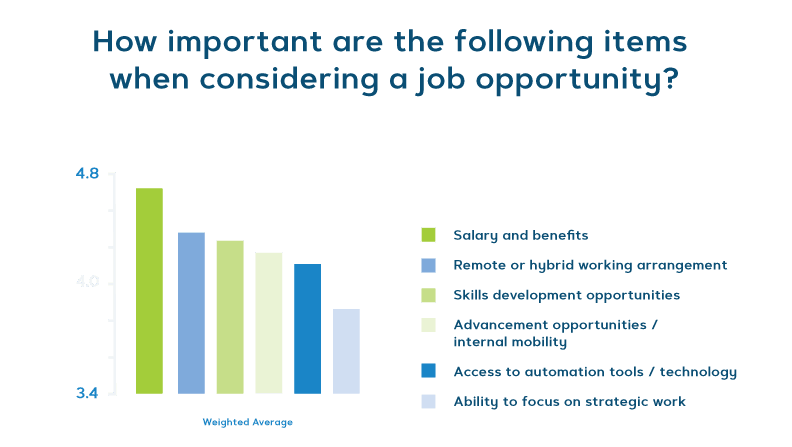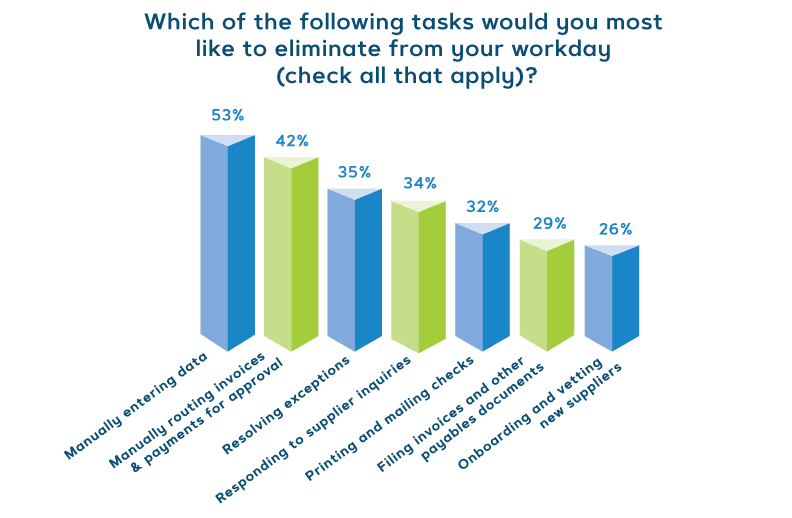As the commercial real estate (CRE) industry bounces back from the pandemic, a new set of challenges rears its head.
Supply chain disruptions and the war in Ukraine have led to historical spikes in the price of building materials and energy. There’s growing concern over a possible recession, and there’s a pressing labor shortage that’s making it tough to weather the storm.
“We think people will continue to allocate money to real estate, but the biggest risk is what’s happening in Ukraine and Russia, and the impact of energy prices on inflation,” said a global investment manager in a recent “Emerging Trends in Real Estate 2022” global outlook report from PwC and Urban Land Institute.
While the full impact of these economic disruptions remains uncertain, the commercial real estate market is hard at work ensuring business continuity and preparing for its future. It’s focused on investing in digital tools to do more with less and creating long-term workforce strategies to attract and retain the talent it needs.
Creating purpose-driven organizations and flexible working arrangements are important components of the real estate industry’s future-proofing strategies. Two-thirds of respondents in a recent Deloitte survey of commercial real estate firms said they plan to be completely or partially virtual.
In return for flexibility, real estate firms need to take a more individualized approach to getting work done in a remote or hybrid office. Today’s CRE work requires a broader set of responsibilities than previous roles, necessitating both soft and technical skills. One-third of the firms surveyed said it’s tough to find that specialized talent.
Let’s take a closer look at the staffing challenges broken down by the different commercial real estate sectors to better understand the industry’s needs and possible solutions.
The staffing challenges that keep the retail industry up at night
The pandemic did a number on the retail industry, shutting down stores and restaurants as well as limiting occupancy to ensure social distancing. According to an “Emerging Trends in Real Estate 2022” United States and Canada report from PWC and the Urban Land Institute, the sector has made a remarkable recovery and is now expecting a decade-high level of retail investment as consumer spending and foot traffic rise.
Sadly, a labor shortage stands in the way. The retail, leisure and hospitality sector lost more workers than any other during the pandemic with many going to other industries with more pay and less stress.
Property owners and tenant advisors told PwC that the resulting talent shortage and rise in operating costs weigh heavy on their minds.
What happens when 1 million hospitality workers leave their jobs?
With more consumers continuing to travel and dine out as the hospitality industry finds a new “normal,” it should come as no surprise that occupancy rates have rebounded. While there is always the possibility of renewed travel restrictions, the hotel business is expected to continually grow as international and business travel picks up.
It’s great news for the hospitality business, but it’s not so easy to find people to handle the growth. After being out of work while hotels and restaurants were closed during the pandemic, many hospitality workers chose not to return to their jobs.
There were a myriad of reasons for making a switch, including health and safety concerns, elevated unemployment benefits and childcare difficulties. Many simply found other employment with higher pay in less strenuous industries, which led to a cross-industry labor shortage among hourly wage workers and capacity constraints.
Hotels have responded to the increased demand and consumer spending by implementing long-term efficiencies and streamlining services with technology.
Redefining the use of office space
The unanswered question of whether hybrid work arrangements are truly here to stay leaves the future of office space largely undetermined.
Overall, it’s likely a mixed bag. Working from home combined with the net effect of the Great Resignation will likely dampen demand for office space, BUT recent CRE surveys conducted by PwC shows more people will work remotely and report to an office three or four days per week on average.
To better understand the staffing challenges currently facing financial departments and to learn what AP professionals are looking for in their careers, AvidXchange and the Institute of Finance & Management (IOFM) conducted an “AP Professional Career Satisfaction Survey.”
We found that remote or hybrid working arrangements was the second most important factor that respondents consider when looking for a job.

That means there’s still a need for office space and for technology that allows workers to disconnect from specific office locations without disrupting their workflows.
How technology can help solve staffing challenges in the commercial real estate industry
Economic uncertainty and a limited labor market brings workforce issues to the forefront and highlights opportunities for change and modernization within the commercial real estate industry.
For many AP professionals within CRE firms, the answer lies in creating more skill development opportunities that allow AP staff to spend more time on department planning, staff training and other managerial tasks they were hired to perform.
Firms realize they can’t attract or retain AP professionals with mundane, inflexible jobs. In fact, our “AP Professional Career Satisfaction Survey” revealed 35% of respondents believe that one-quarter to one-half of their workday is spent on manual/repetitive tasks. Many want to eliminate manually entering data, routing invoices and payments for approval and resolving exceptions.

One way to offer more skills development opportunities and strategic work is to reduce manual tasks and arm your AP professionals with technology, including AP automation. Automating time-intensive, manual tasks like opening mail, keying in invoice data and shuffling paper to get necessary approvals allows AP staff in CRE firms to create efficiencies, cut costs and free people up to work on more strategic initiatives, like growing the business.
Download our white paper “How to Attract, Retain and Grow Top AP Talent Amid Economic Uncertainty” to learn more about what AP professionals are looking for in their careers.



